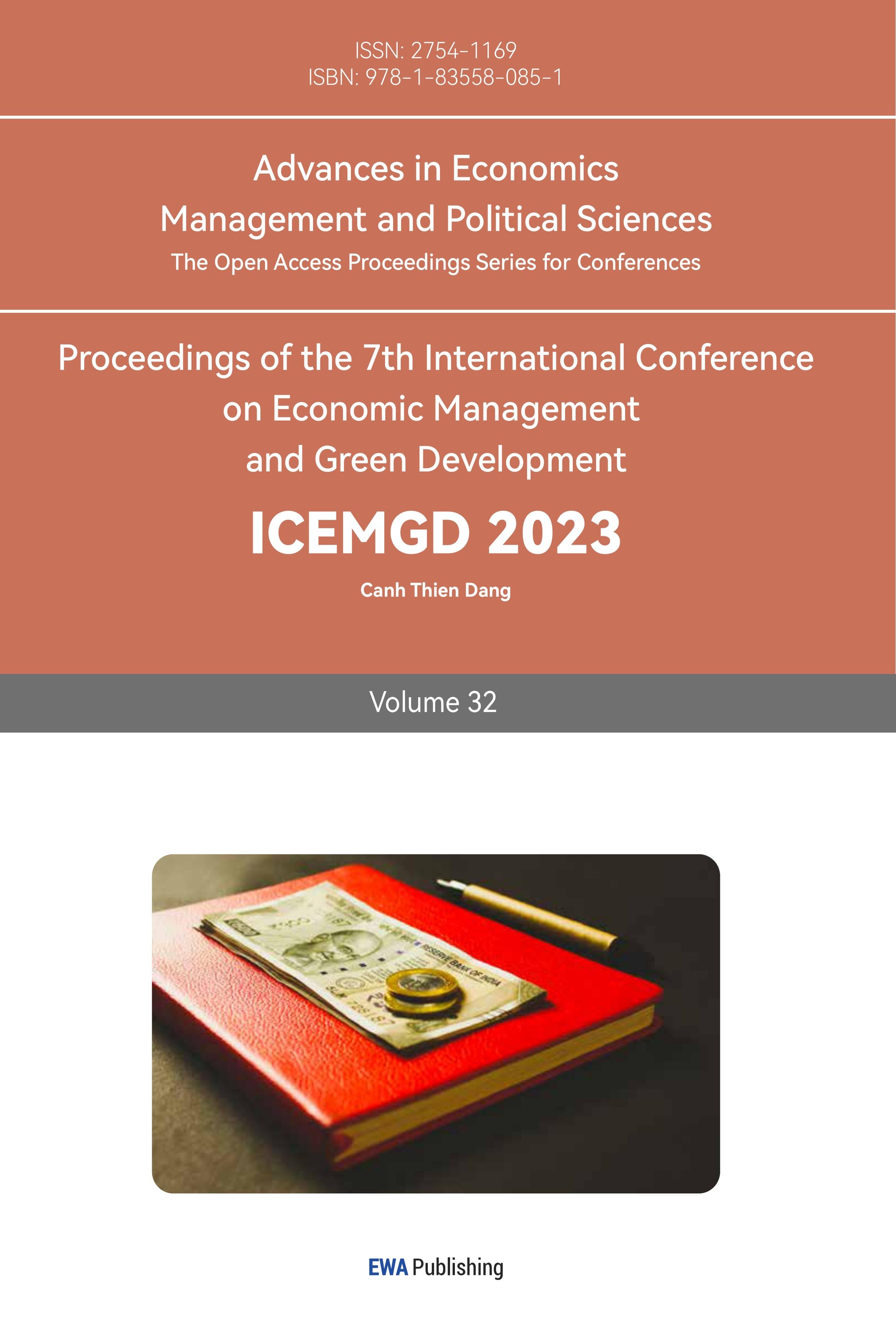References
[1]. Total Population in China, https://www.ilo.org
[2]. The Population and Family Planning Law of the People's Republic of China 2002. http://www.gov.cn/banshi/2005-08/21/content_25059.htm
[3]. Zhuang, G. B. (2017). Research on the Evolution and Impact of China's Family Planning Policy (Doctoral dissertation, Nanjing University of Aeronautics and Astronautics). https://kns.cnki.net/KCMS/detail/detail.aspx?dbname=CDFDLAST2019&filename=1019801119.nh
[4]. National Bureau of Statistics of China, https://data.stats.gov.cn/easyquery.htm?cn=C01
[5]. Deng, Y. (2016). Research on the Application of Computer Control Technology in Industrial Automation Production. Science and Technology and Enterprise (03), 73+76.
[6]. Tang, W. (2017). Analysis of the Management Status of Foxconn Technology Group Co., Ltd. Industry and Technology Forum (05), 285-286.
[7]. Lin, Y. (1994). Economic Thinking on China's Retirement System. Contemporary Finance and Economics (01).
[8]. National Bureau of Statistics of China, https://data.stats.gov.cn/easyquery.htm?cn=C01
[9]. Liu, X. L. (2014). Research on the Gap and Sustainability of China's Pension Insurance Revenue and Expenditure. China Industrial Economy (09), 25-37.
[10]. Du, P., & An, R. X. (2021). The Impact and Implications of COVID-19 on Elderly Health Services. Journal of Hebei University (Philosophy and Social Sciences Edition) (01), 92-98.
[11]. G20 Fukuoka Policy Priorities. (2019). Aging and Financial Inclusion - 8 Key Steps to Design a Better Future. https://www.oecd.org/g20/summits/osaka/G20-Fukuoka-Policy-Priorities-on-Aging.pdf
[12]. Bergantino, S. (1998). Life cycle investment behavior, demographics and asset prices.
Cite this article
Yi,P. (2023). China’s Population Aging: Economic Problems, Solutions and Prospect. Advances in Economics, Management and Political Sciences,32,71-77.
Data availability
The datasets used and/or analyzed during the current study will be available from the authors upon reasonable request.
Disclaimer/Publisher's Note
The statements, opinions and data contained in all publications are solely those of the individual author(s) and contributor(s) and not of EWA Publishing and/or the editor(s). EWA Publishing and/or the editor(s) disclaim responsibility for any injury to people or property resulting from any ideas, methods, instructions or products referred to in the content.
About volume
Volume title: Proceedings of the 7th International Conference on Economic Management and Green Development
© 2024 by the author(s). Licensee EWA Publishing, Oxford, UK. This article is an open access article distributed under the terms and
conditions of the Creative Commons Attribution (CC BY) license. Authors who
publish this series agree to the following terms:
1. Authors retain copyright and grant the series right of first publication with the work simultaneously licensed under a Creative Commons
Attribution License that allows others to share the work with an acknowledgment of the work's authorship and initial publication in this
series.
2. Authors are able to enter into separate, additional contractual arrangements for the non-exclusive distribution of the series's published
version of the work (e.g., post it to an institutional repository or publish it in a book), with an acknowledgment of its initial
publication in this series.
3. Authors are permitted and encouraged to post their work online (e.g., in institutional repositories or on their website) prior to and
during the submission process, as it can lead to productive exchanges, as well as earlier and greater citation of published work (See
Open access policy for details).
References
[1]. Total Population in China, https://www.ilo.org
[2]. The Population and Family Planning Law of the People's Republic of China 2002. http://www.gov.cn/banshi/2005-08/21/content_25059.htm
[3]. Zhuang, G. B. (2017). Research on the Evolution and Impact of China's Family Planning Policy (Doctoral dissertation, Nanjing University of Aeronautics and Astronautics). https://kns.cnki.net/KCMS/detail/detail.aspx?dbname=CDFDLAST2019&filename=1019801119.nh
[4]. National Bureau of Statistics of China, https://data.stats.gov.cn/easyquery.htm?cn=C01
[5]. Deng, Y. (2016). Research on the Application of Computer Control Technology in Industrial Automation Production. Science and Technology and Enterprise (03), 73+76.
[6]. Tang, W. (2017). Analysis of the Management Status of Foxconn Technology Group Co., Ltd. Industry and Technology Forum (05), 285-286.
[7]. Lin, Y. (1994). Economic Thinking on China's Retirement System. Contemporary Finance and Economics (01).
[8]. National Bureau of Statistics of China, https://data.stats.gov.cn/easyquery.htm?cn=C01
[9]. Liu, X. L. (2014). Research on the Gap and Sustainability of China's Pension Insurance Revenue and Expenditure. China Industrial Economy (09), 25-37.
[10]. Du, P., & An, R. X. (2021). The Impact and Implications of COVID-19 on Elderly Health Services. Journal of Hebei University (Philosophy and Social Sciences Edition) (01), 92-98.
[11]. G20 Fukuoka Policy Priorities. (2019). Aging and Financial Inclusion - 8 Key Steps to Design a Better Future. https://www.oecd.org/g20/summits/osaka/G20-Fukuoka-Policy-Priorities-on-Aging.pdf
[12]. Bergantino, S. (1998). Life cycle investment behavior, demographics and asset prices.









